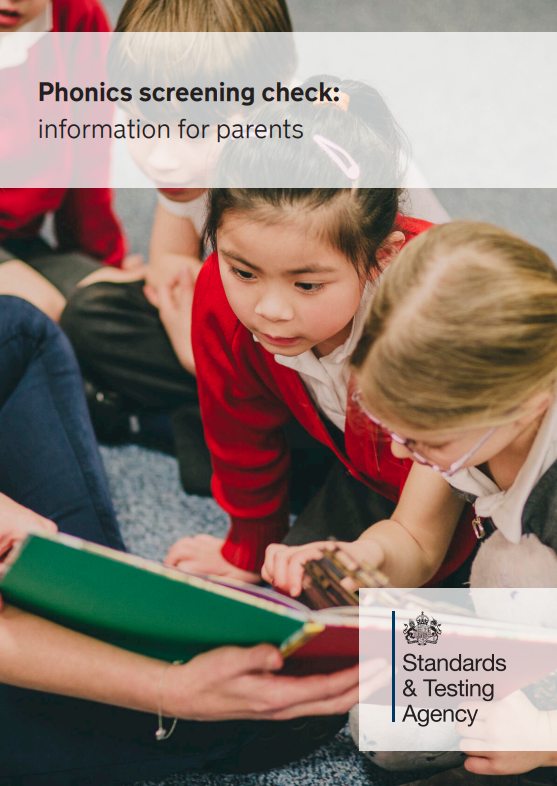

Related Pages
- Headteacher's Welcome
- Vision and Values
- British Values
- Governing Body
- Staff
- School Tours
- School Tour Gallery
- Curriculum
- Cultural Capital
- How We Teach Phonics
- Assessment
- KS2 SATs
- Growth Mindset
- Friends of Epping Primary School
- School Council
- Eco Council
- Wellbeing Award
- Sport and PE
- Epping Forest School-Led Improvement Partnership
Phonics at Epping Primary
At Epping Primary School, we believe that all our children can become fluent readers and writers. This is why we teach reading through Little Wandle Letters and Sounds Revised, which is a systematic and synthetic phonics programme, validated by the Department for Education.
This is a fully comprehensive programme where children start learning single letter sounds in the Autumn Term of their Reception year and it builds in progression throughout EYFS and Year One, preparing our pupils for the statutory phonics screening that takes place at the end of year 1.
Click here for the link to the 'For Parents' section of the Little Wandle website.
The below information provides information on how phonics is taught at Epping Primary, including a selection of resources which you can use to support your child’s learning at home.
If you require any further support, please contact your child's class teacher or our Phonics Lead, Mr Ball.
Phonics and Early Reading Policy
Resources and Videos
The resources on this page will help you support your child with saying their sounds and writing their letters. There are also some useful videos so you can see how they are taught at school and feel confident about supporting their reading at home.
The government have produced a very useful leaflet on the Phonics Screening Check. Please click on the image below for this leaflet.
Written resources
Alphabet Mat
Autumn 1 Phase 2 Sounds
Autumn 2 Phase 2 Sounds
Capital Letter Formation Guide
Grow the Code Phases 2, 3 and 5
Overview of Learning
Phase 2 and 3 Sounds Mat
Phase 5 Sounds Mat
Phonics/Programme Progression Reception Overview
Phonics/Programme Progression Year 1 Overview
Spring 1 Phase 3 Sounds
Terminology
Useful Videos
Phase 2 sounds taught in EYFS Autumn 1Phase 2 sounds taught in EYFS Autumn 2
Phase 3 sounds taught in EYFS Spring 1
How we teach blending
How we teach tricky words
Phonics FAQ
"What is Phonics?"
"When do we teach Phonics?"
"Reading and Phonics"
"How can you support your child with reading"
"What is Phonics?"
Phonics is recommended as the first strategy that children should be taught in helping them to read and write. It is making connections between the sounds of our spoken words and the letters that are used to write them down. Spoken English uses about 42 sounds (phonemes). These phonemes are represented by letters (graphemes). The alphabet contains only 26 letters, but we use it to make all the graphemes that represent the phonemes of English.
It is vitally important that children are taught phonics in a systematic and synthetic way. The definition of systematic phonics teaching is the direct teaching of a set of grapheme/phoneme correspondence (GPC) in a clearly defined sequence. Synthetic phonics teaches children how to blend or synthesise words using the smallest unit of sound (phoneme). First, they are taught to connect the sound with the written representation (graphemes) which may be one letter or a group of letters (for example ai, igh). Then they are taught to read by blending these sounds together.
"When do we teach Phonics?"
Children make a strong start in Reception: teaching begins in Week 2 of the Autumn term. We follow the Little Wandle Letters and Sounds Revised progression, which ensures children build on their growing knowledge of the alphabetic code, mastering phonics to read and spell as they move through school.
Phonics is taught every morning for no longer than 30 minutes. In Reception, we build from 10-minute lessons, with additional daily oral blending games, to the full-length lesson as quickly as possible. Each Friday, we review the week’s teaching to help children become fluent readers.
"Reading and Phonics?"
Reading is essential for all subject areas and improves life chances. Positive attitudes to reading and choosing to read have academic, social, and emotional benefits for children.
Each book your child reads has been carefully matched to your child’s secure phonic knowledge and word reading ability. Children learn to apply their phonics skills in reading practise sessions two
times a week, developing their fluency and comprehension skills along the way. Once with the class teacher and a second read with a learning support assistant. They read the same book twice per week. The first time we work on decoding (sounding out) the words, the second time we look at comprehension and work on prosody which is reading with expression.
We read the books two times at school because we want to develop the fluency. The more children see words, the more they begin to read them automatically without having to sound them out.
"How can you support your child with reading?"
Although your child will be taught to read at school, you can have a huge impact on their reading journey by continuing their practice at home.
Reading at home encourages a love of books, along with developing vocabulary and discussion. Parents should use voices, expression, discuss unfamiliar vocabulary, talk about the pictures, and predict what might happen next. Give positive yet informative feedback in the home reading diary at least 3 times a week.
When your child reads to you, if they are struggling to read a word, support them with segmenting the sounds and then blending them together to read the word. Encourage them to be independent readers!
More information
If you require any further support, please contact your child's class teacher or our Phonics Lead, Mr Ball.














